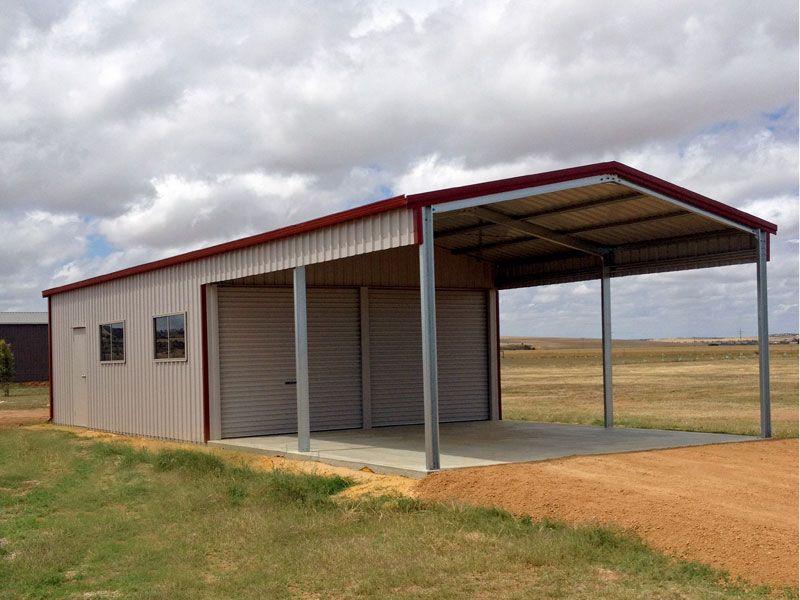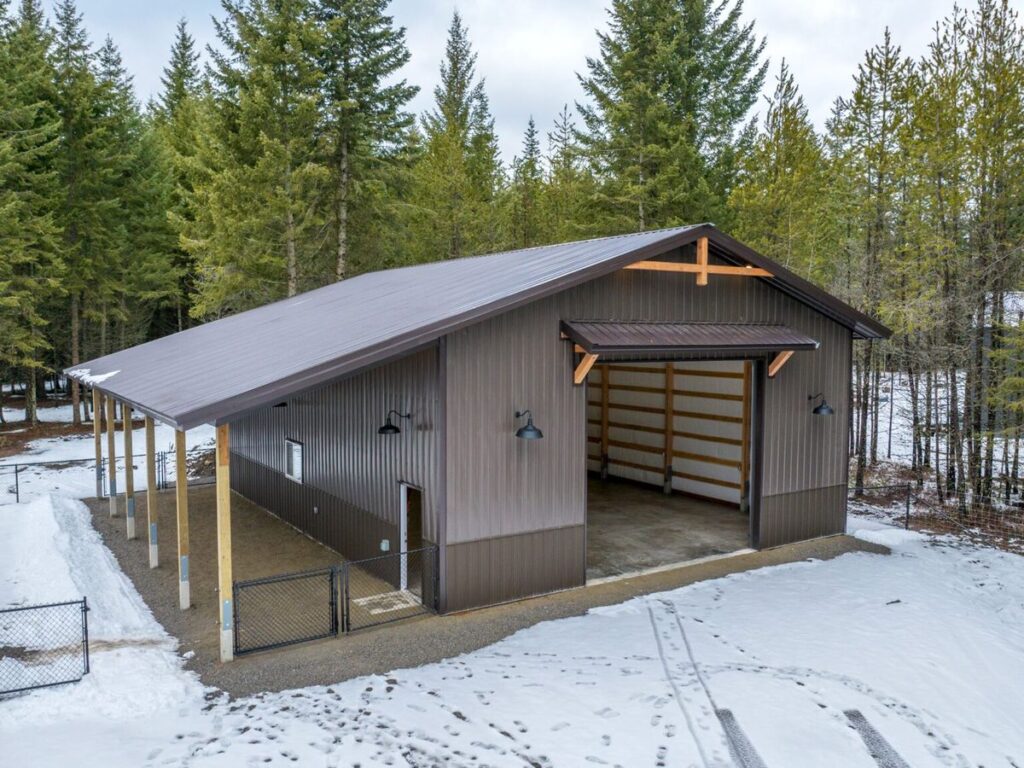Building a 30×40 pole barn? One of the first questions is how many posts you’ll need. The count depends on design, spacing, and purpose. This guide keeps it simple so you avoid mistakes and get a strong, stable build.
How many posts do you need for a 30×40 pole barn?
Most 30×40 pole barns need 14–16 posts, spaced about 8 feet apart.
Key Takeaways
- Standard spacing is 8 feet between posts.
- A 30×40 barn typically needs 14–16 posts.
- Start with 4 corners, then add posts every 8 feet.
- Adjust count for heavy loads, soil type, roof style, or local codes.
- Balance cost with stability—fewer posts save money, more posts add strength.
Understanding Pole Barn Construction Basics

What Makes a Pole Barn Different?
Pole barns skip the full concrete foundation. Instead, treated posts are set deep in the ground to anchor the whole structure. That keeps costs down and setup quick.
Why Posts Matter
Posts carry the weight of the roof and walls. Fewer posts give more open space, but spacing must be right to keep stability.
Framing and Roof
Girts and trusses connect the posts to form the frame. Then steel panels or other siding finish the walls and roof. The design is simple but engineered to handle weather stress.
Standard Post Spacing for Pole Barns
Typical Spacing
Most pole barns run on 8-foot spacing between posts. It’s the sweet spot that balances strength, material use, and build time. Go wider and you’ll need beefier lumber, which spikes costs fast.
Why It Matters
Tighter spacing gives more support and a sturdier build. Wider gaps save posts but can feel shaky with heavy doors or lofts. Think of it like loose laces—things don’t hold right.
Custom Adjustments
Soil, snow load, and barn use all affect spacing. Heavy snow? Go closer. Just storing a mower? You can stretch it. The best move is checking with your kit supplier, since they’ll size it to your local conditions.
Calculating Posts for a 30×40 Pole Barn
Start with the Basics
A 30×40 pole barn usually needs posts every 8 feet along the walls. That spacing keeps the structure solid without wasting lumber. You’re looking at roughly 14 to 16 posts total.
Corners Count First
Each corner provides stability, so you start with four posts. They act as anchors holding the barn together.
Side Spacing
On the 40-foot sides, you’ll drop in posts at 8-foot intervals. That’s five per side, including corners. For the 30-foot sides, you’ll usually land on four per side.
Adjust for Use
If this barn is just for storage, standard spacing works fine. Planning heavy loads, big doors, or loft space? Add a couple of extra posts for backup.
Don’t Forget Local Codes
Local codes may require changes to spacing based on snow, wind, or soil. A quick check with your inspector avoids costly delays.
Bottom Line
For most barns, 14–16 posts is the standard. Start with corners, space them at 8 feet, then add more if your design needs extra support.
Factors That Affect the Number of Posts Needed
Building Size
Bigger barns need more posts. A 30×40 build typically uses 14–16 posts, but add-ons can push that number higher.
Post Spacing
Standard spacing runs 8–12 feet apart. Tighter spacing means extra posts, giving you more stability.
Soil & Foundation
Soft soil or tricky ground calls for more posts to lock in strength. Solid concrete pads can help keep the count lower.
Roof Style
A heavy roof, like one with metal trusses or extra pitch, needs stronger support. That often translates to a few more posts.
Intended Use
Storage for lawn gear is one thing. Housing livestock or vehicles? You’ll want more posts to handle weight and traffic.
Cost Implications of Post Count
Fewer Posts, Lower Price
Cutting down the number of posts can save you upfront cash. Fewer holes to dig, fewer posts to buy, and less labour. But here’s the catch: you might compromise stability if you skimp too much.
More Posts, Higher Cost
Adding extra posts bumps up material and labour costs. Each post means more concrete, brackets, and time spent. Still, you’re paying for a sturdier barn that handles weather like a champ.
Finding the Sweet Spot
The real flex is balance. You want enough posts for long-term strength without draining your wallet. Think smart, spend, not a cheap shortcut.
Building Codes and Local Requirements
Why It Matters
Before setting posts, check your local rules. Permits are required in most areas, and skipping them can cost time and money.
Zoning and Setbacks
Every area has zoning laws that set limits on how close you can build to fences or neighbours. A quick call to your city office prevents issues later.
Post Spacing Rules
Some codes even dictate post spacing or foundation depth. Instead of guessing, confirm with your inspector so your barn passes the first time.
Pro Tip
Permits may feel like a hassle, but they ensure your barn meets standards and avoids future problems.
Tips for Planning a 30×40 Pole Barn
Lock in the Layout
Think about what you’ll actually use the space for. Cars, tools, or maybe a side hustle gym? Sketch it out first, so you don’t end up short on room.
Count the Posts Right
Post spacing is the backbone. Most builds use 8-foot spacing between posts. Wider gaps risk sagging; tighter gaps can mean overspending.
Pick Materials That Flex
Steel posts flex against the weather, wood brings that rustic drip. Match your choice to your budget and vibe. It’s like picking sneakers—function plus style.
Plan Ahead for Upgrades
Want power, plumbing, or insulation later? Run conduits now. Future-you will thank present-you for saving the hassle and cash.
Final Takeaway: How Many Posts Do You Really Need?
For a 30×40 pole barn, plan on 14–16 posts as the standard. If you’re adding heavy loads or a loft, increase that number for stability. Posts are the barn’s backbone—the more you add, the stronger it gets.

